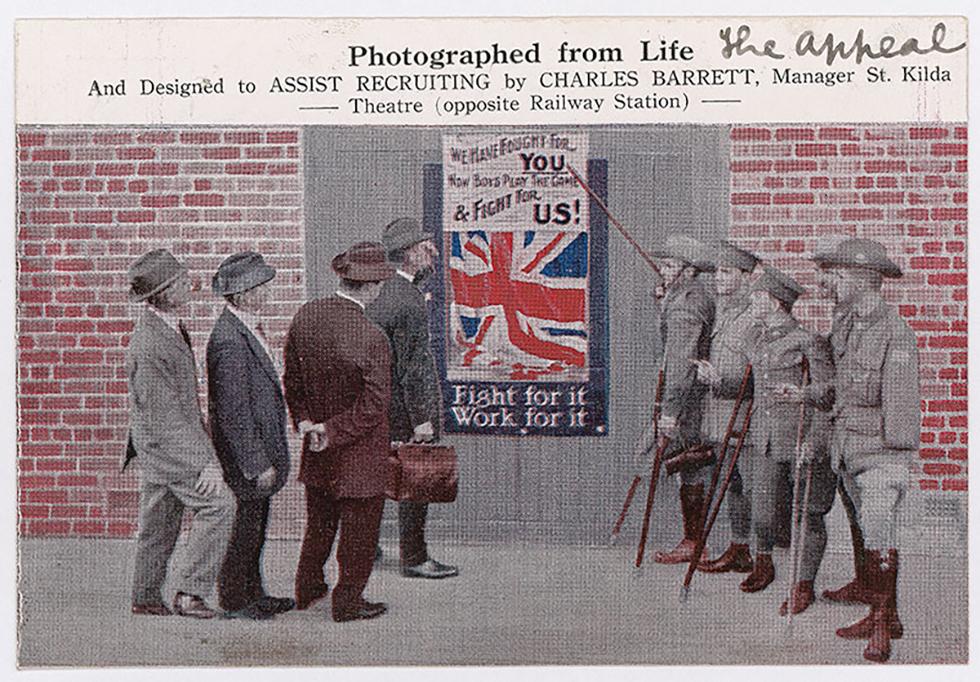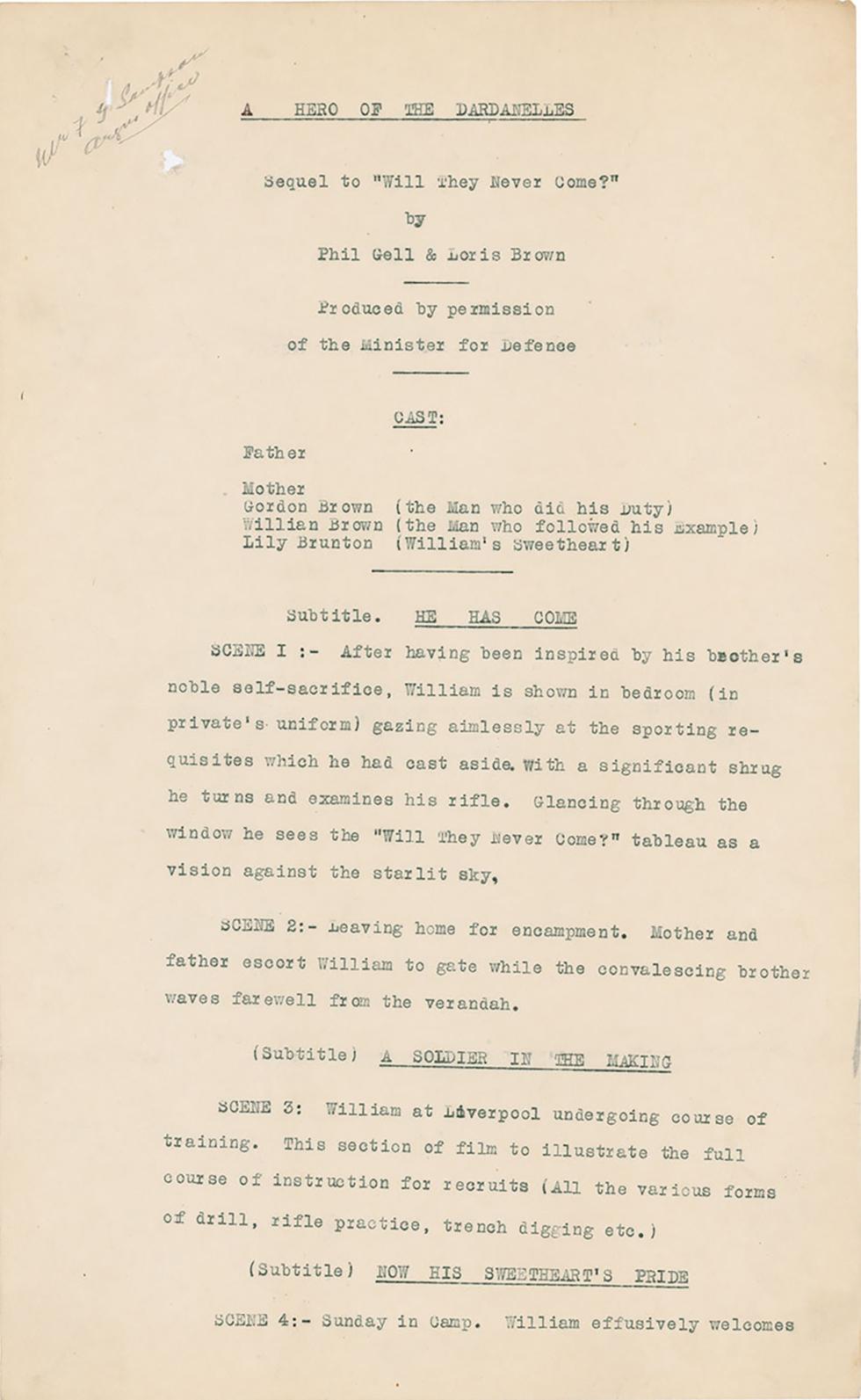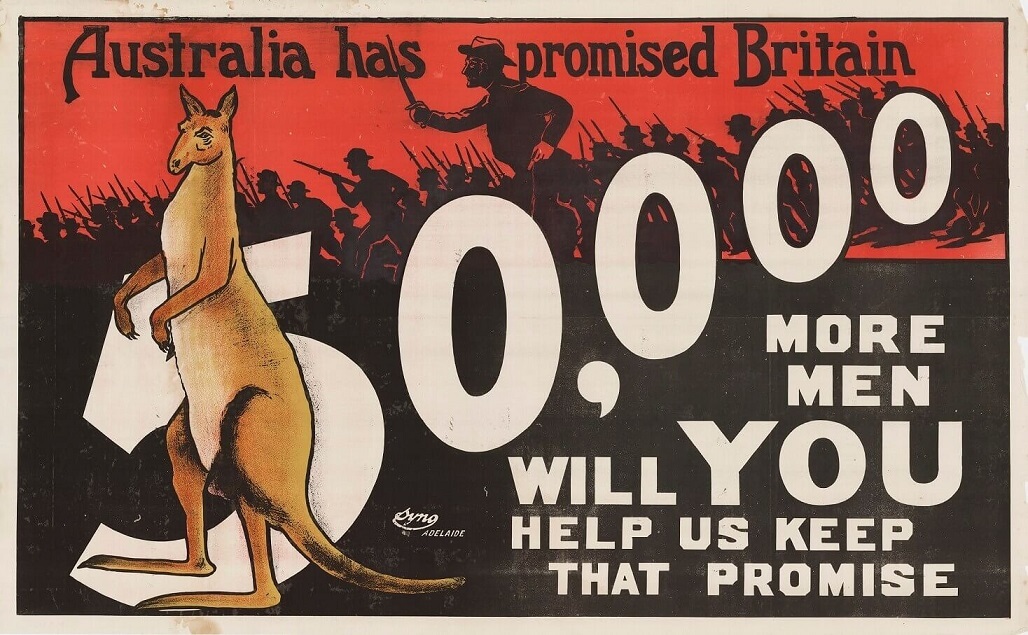


Source: State Records of South Australia
It quickly became apparent after the start of World War One that the number of soldiers available would not be enough and more recruits would be needed. To try and encourage more men to sign up, propaganda was used to make war seem exciting or noble, shame those that hadn't enlisted or weren't supporting the war effort, and to incite anger against the Germans. Read through the resource below to learn more about propaganda and how it was used in World War I.
Australian propaganda was designed to maintain public anger about German atrocities and idealise Australian soldiers. Most pieces promoted enlistment in some way or another and the most violent propaganda images surfaced around the time of the conscription debates. Read through this website and the linked resources to learn more.
Propaganda is a form of communication that promotes a particular perspective or agenda by using text and images to provoke an emotional response and influence behaviour. During the First World War, propaganda was used around the world for fundraising, to build hatred of the enemy, and to encourage enlistment. Posters were an ideal method of communicating this propaganda, as they could be printed and distributed quickly in large quantities. Read through this website to see some examples and find some helpful research prompts.
The conscription debate generated an enormous volume of propaganda material. Although the Australian Government promoting the 'Yes' case had more resources at its disposal, the 'No' side created some extremely effective cartoons and leaflets, some of which were extraordinarily influential. Read through this website to learn more.
This article includes a number of propaganda posters from right across the world.
Propaganda was being used long before the outbreak of World War One, but the use of posters, rather than handbills, was pioneered during the war. The first posters relied simply on text to get their message across; as the war progressed the posters become increasingly sophisticated with artists using striking images to convey pro-war messages. Read through this article to learn more.
One hundred years ago, 112,000 Victorians enlisted in the Australian Imperial Force (AIF), 89,000 served overseas and 19,000 would tragically lose their lives. This article takes us back in time through a selection of World War I propaganda materials located in the archive.
The government needed to recruit lots of soldiers and wanted people to support them. Posters were printed that made the army look exciting. Other posters told men it was their duty to join, that they would feel proud if they did and guilty or embarrassed if they didn't join. Read through this website to learn more about propaganda in World War I.
Atrocity propaganda focused on the most violent acts committed by the German and Austro-Hungarian armies, emphasising their barbarity and providing justification for the conflict. Professor Jo Fox describes the forms that such propaganda took in the early years of the war.
From the beginning of World War One, both sides of the conflict used propaganda to shape international opinion. Curator Ian Cooke considers the newspapers, books and cartoons produced in an attempt to influence both neutral and enemy countries.
Advertising and marketing historian David Clampin reveals how key propaganda messages were incorporated into commercial advertising for the Home Front and the battlefield, transforming consumer’s relationships with everyday goods.
Professor Jo Fox considers the use of women as symbols, victims and homemakers in World War One propaganda.
Curator Ian Cooke discusses the ways in which propaganda influenced children’s perceptions of World War One, encouraging them to develop particular values and to contribute to the war effort.
How did fighting nations depict the enemy? Professor David Welch explores the techniques used when creating atrocity propaganda.


Printed on the reverse side of the postcard (page 2) is the poem ‘The Shirker’s Chorus.’ Men who were fit and able to enlist—but didn’t—were often labelled a ‘shirker’. Underneath the poem is space for the sender to add their name, suggesting the postcard could be sent to unenlisted men by someone who knew them.

This five-page script was written in 1915 by Phil Gell and Loris Brown for a proposed Australian recruitment film titled A Hero of the Dardanelles. Created by Amalgamated Pictures Limited, the film was intended as a sequel to Will They Never Come? which was also made in 1915. The script includes the cast of characters and describes the action and setting for 15 scenes. It tells the story of a young man who leaves his family and sweetheart to enlist in the Australian Imperial Force (AIF) and then serves at Gallipoli.
Lindsay was a brilliant illustrator and he let his imagination loose in a series of vivid anti-German posters. Here, the 'Hun' is not even human: a brutal gorilla-like monster reaching out to crush the entire world. Lindsay makes the point that although the spilling of blood begins in distant Europe, it is steadily dripping towards Australia.
Every side in a war tries to harden the resolve of its people by recounting stories, whether true or false, of atrocities: acts of violence which go beyond the expected brutality of conventional combat.

Australia is represented in this recruiting poster by the kangaroo. In the background are Australian soldiers charging the enemy with fixed bayonets. The text asks Australian men to 'keep that promise' to send an additional 50,000 reinforcements to Britain's aid. It is intended to appeal to Australians' loyalty to the Mother Country, but also implies that honour is involved in keeping a promise.
